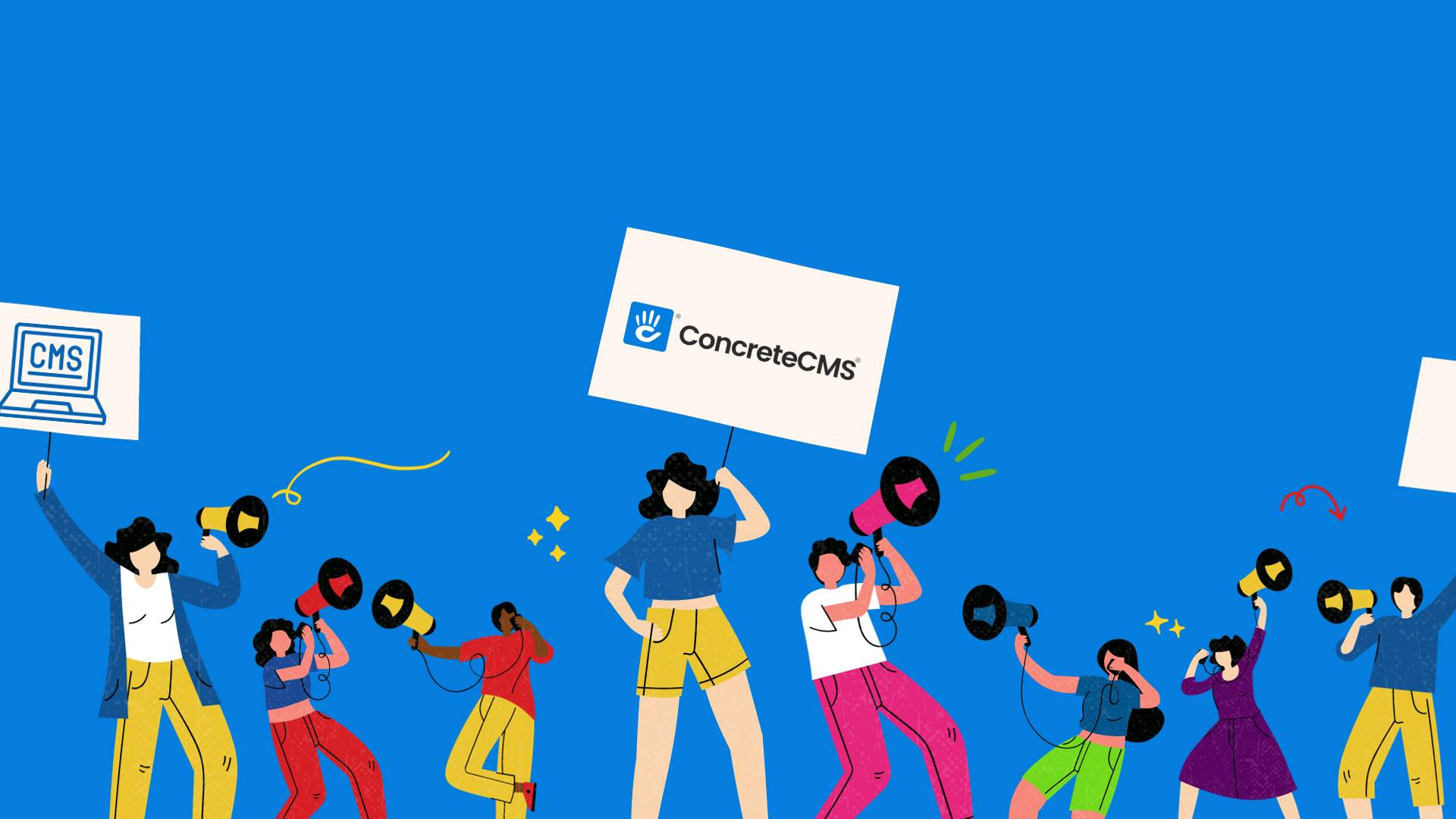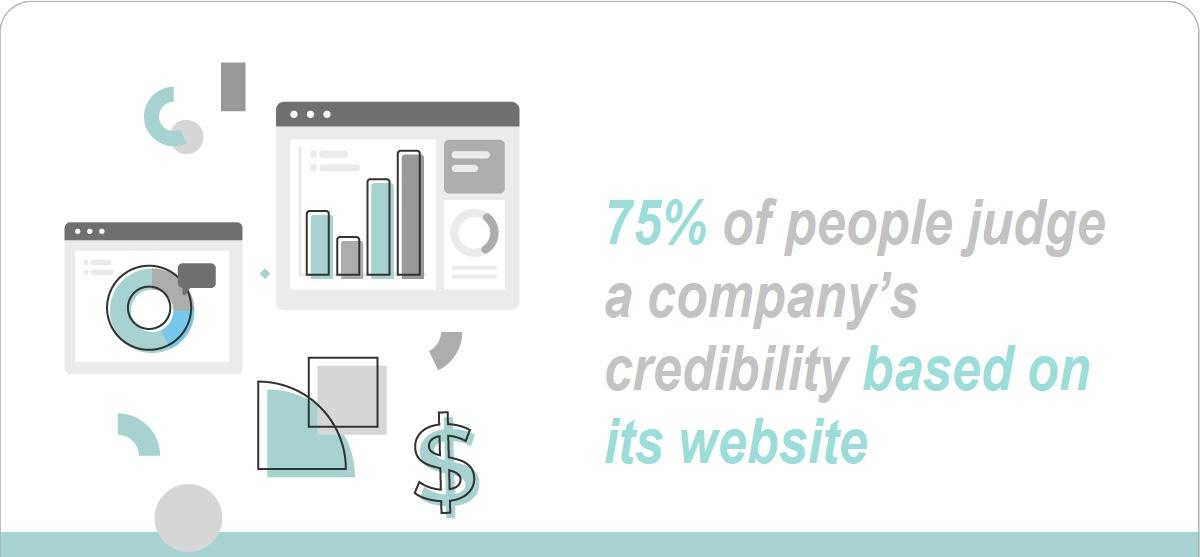 The icing on the cake is you get to dictate the content and shape narratives.
The icing on the cake is you get to dictate the content and shape narratives.
You don’t have to be a PR expert to make this work. However, you do have to exert some effort. But don’t worry. In today's guide, I’ll walk you through tips for using your website as a PR tool:
Make Pages Visually Appealing to Visitors
A total of 50 milliseconds is all it takes for visitors to decide if your website is reliable, trustworthy, or otherwise. So, if you want site visitors to see you in a positive light, your pages must come across as reliable and trustworthy from the get-go.
Notice I never mentioned “homepage?” That’s because you should focus on improving all your indexed pages, including your blog, about us, or service pages visually. Visitors could land on any of them, so each matters for your online reputation.
When you offer a great user experience, visitors stay longer.
So, begin by keeping the layouts simple with plenty of white space. This prevents your visitors from getting overwhelmed and makes it easier to focus on your PR messages. You can take a cue from the Concrete CMS homepage:
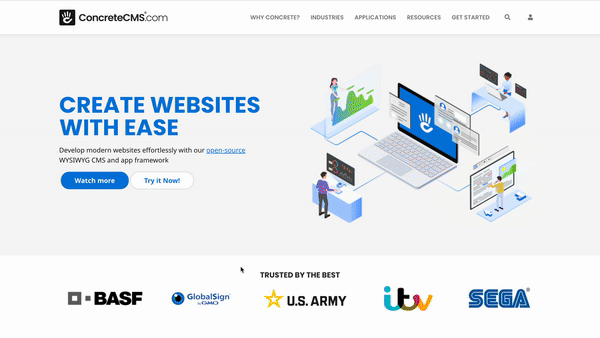
Add social proof on your homepage, service pages, and other relevant spots, too. These are appealing to potential customers since they help boost your site’s trustworthiness.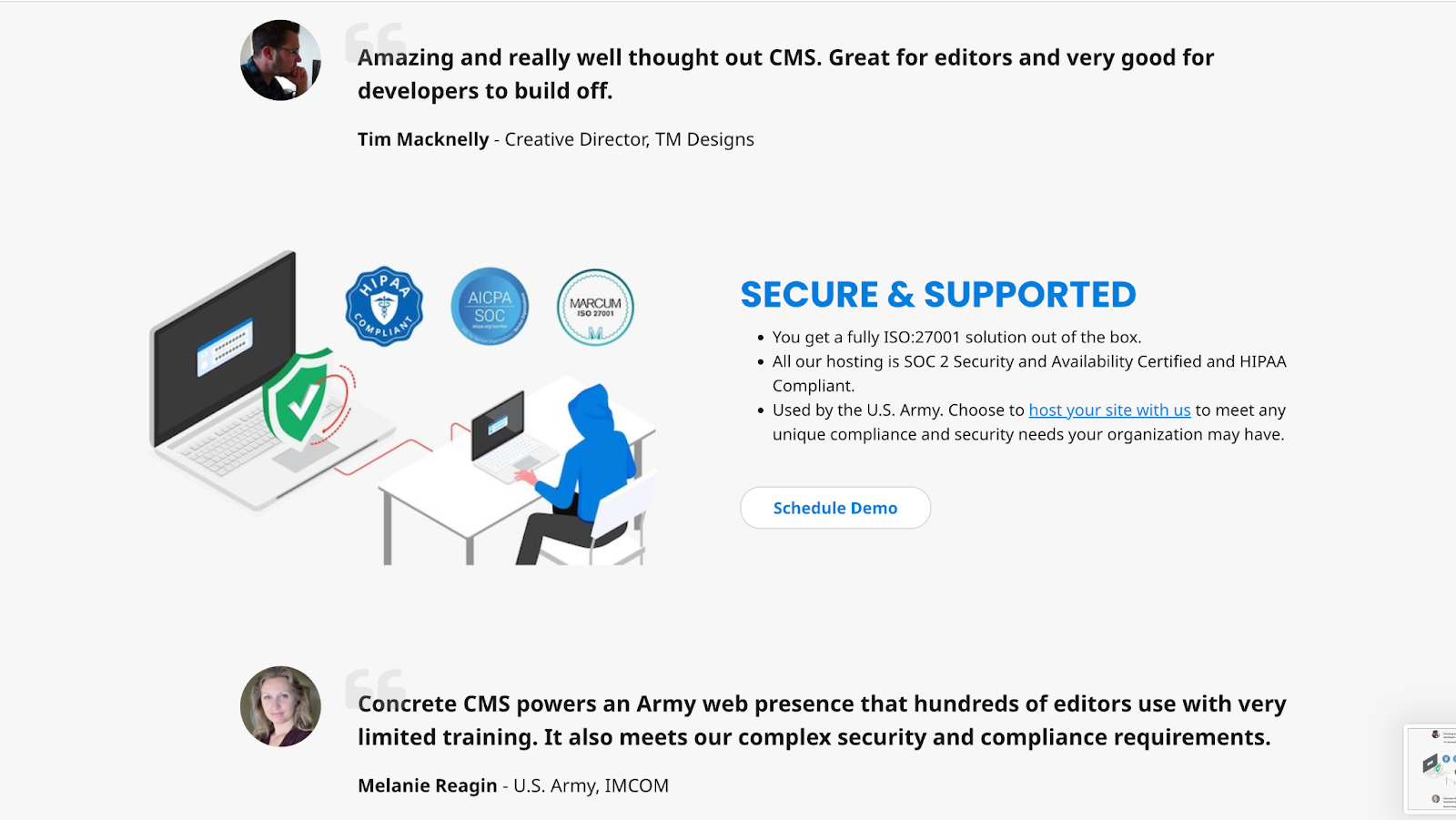
Ensure mobile responsiveness as well. Over 80% of Internet users are using their mobile devices to surf the net. You don’t want your pages to look cluttered on a smaller screen. That’s going to negatively affect your brand reputation.
To ensure your pages are mobile-friendly, choose a mobile-responsive theme or template. You’ll need to use a large readable font as part of your web design, too. Also, avoid large chunks of text. Make sure your call-to-action buttons are enlarged as well. It’s hard to click on a small button if you’re using just your thumb.
Include an Online Newsroom
You might not always have the time to take the proactive approach and give major publications a heads-up for when you have something you’d like them to cover.
But don’t worry. You still have the chance to get positive media coverage even if you don’t actively reach out to your target journalists. These gatekeepers of information typically visit websites of organizations to look for newsworthy material, making them a powerful PR tool. All you need to do is have this dedicated space for all this material to increase your chances of editorial coverage.
This is where an online newsroom comes in.
An online newsroom is a web page that contains your company news. The news can be everything from your product launches to media mentions and awards and recognition. See Concrete CMS’ online newsroom below:
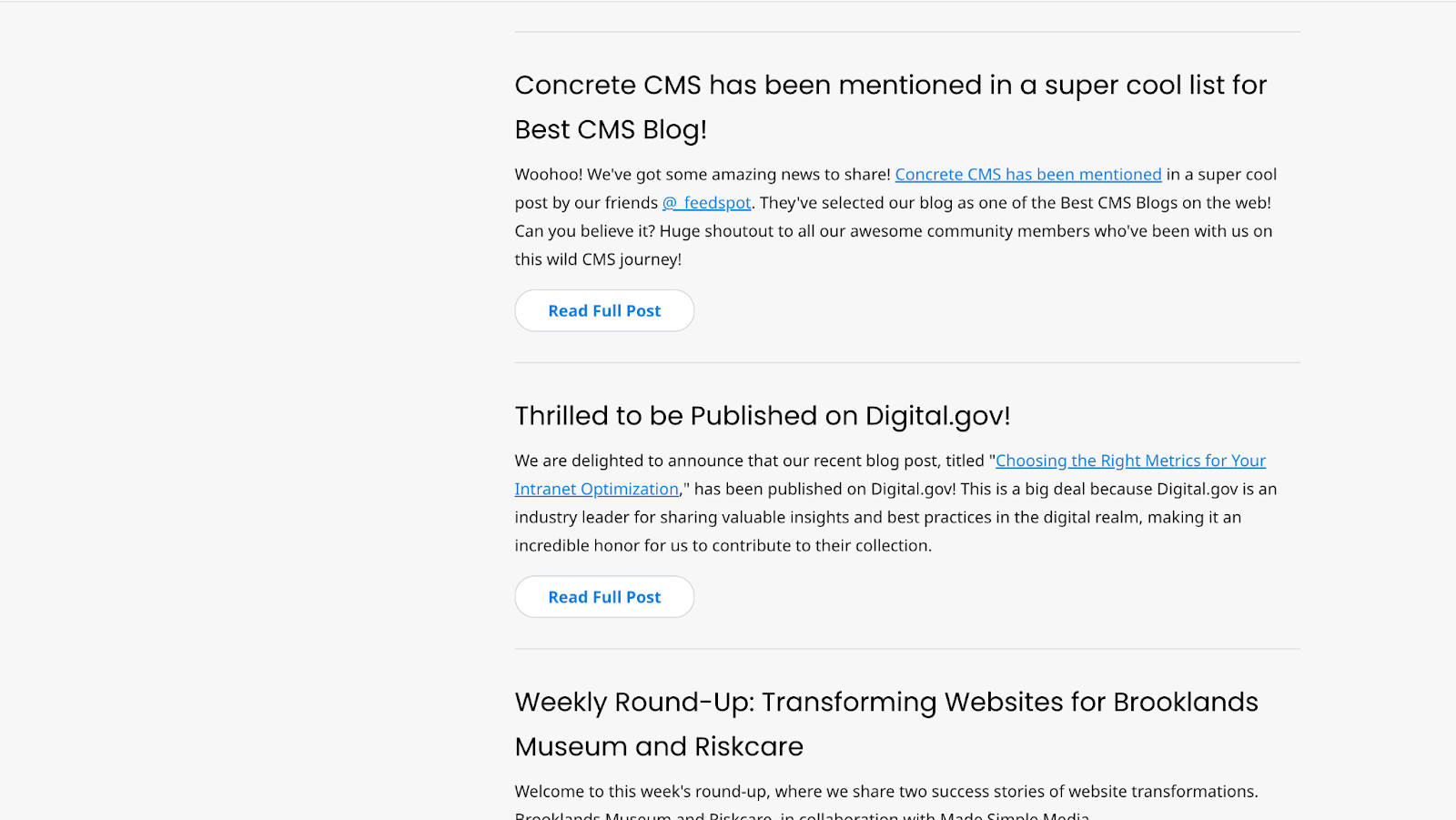
Source
To increase your chances of getting coverage by the biggest media outlets, you need to make sure your press releases are written well, though. Create a snappy headline. Mention the 5Ws - who, what, where, when, and why in the first paragraph.
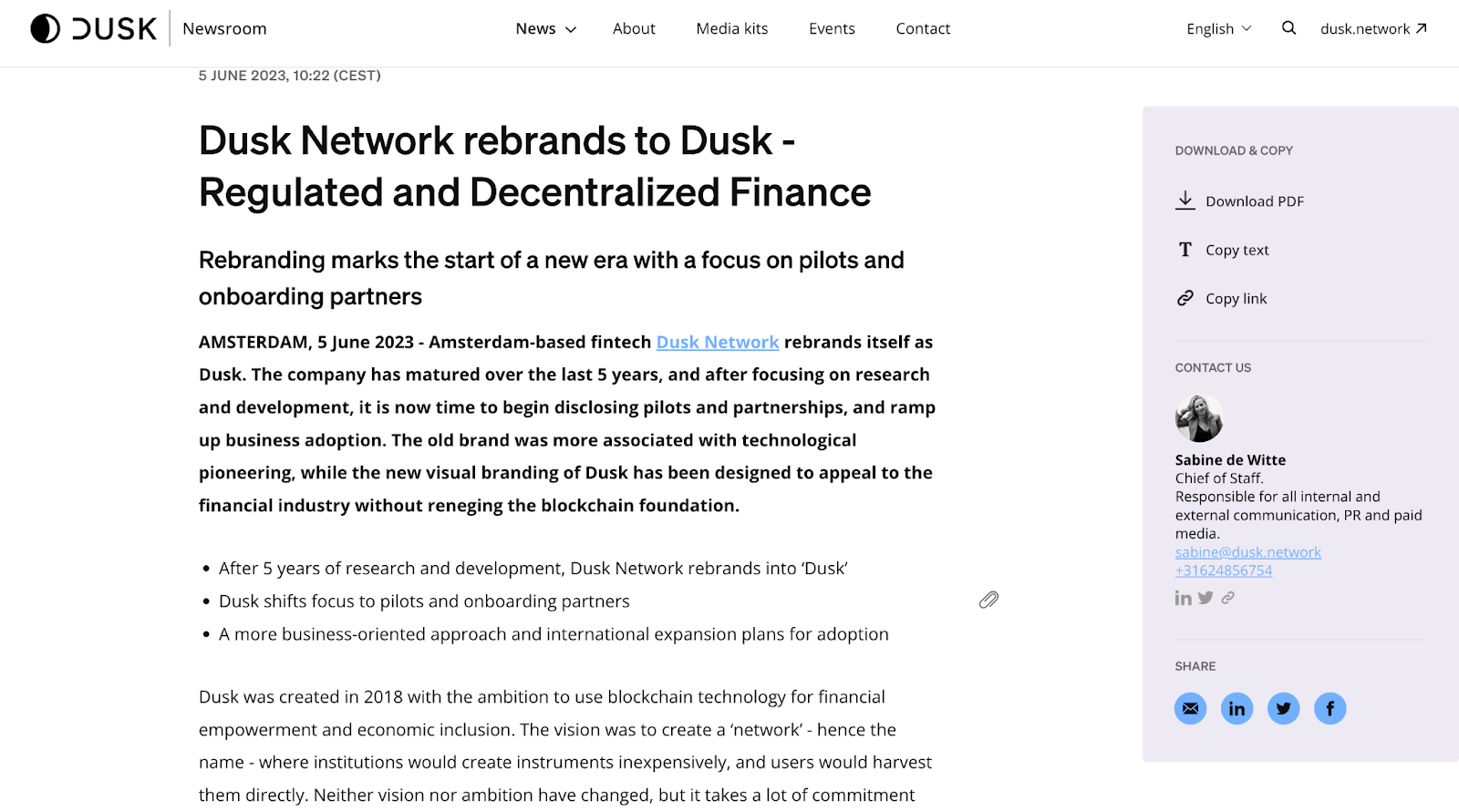 Source
Source
Don’t forget to incorporate relevant keywords into your press releases, too. This will help ensure they come up in search engine results pages given a search query.
Make sure your newsroom also has the contact information of a point person in your public relations team. You might not be able to cover everything in your news story, after all. Relevant journalists may have questions they’d need answers to immediately.
See how Shimano included all the contact details of its media point person in its online newsroom:
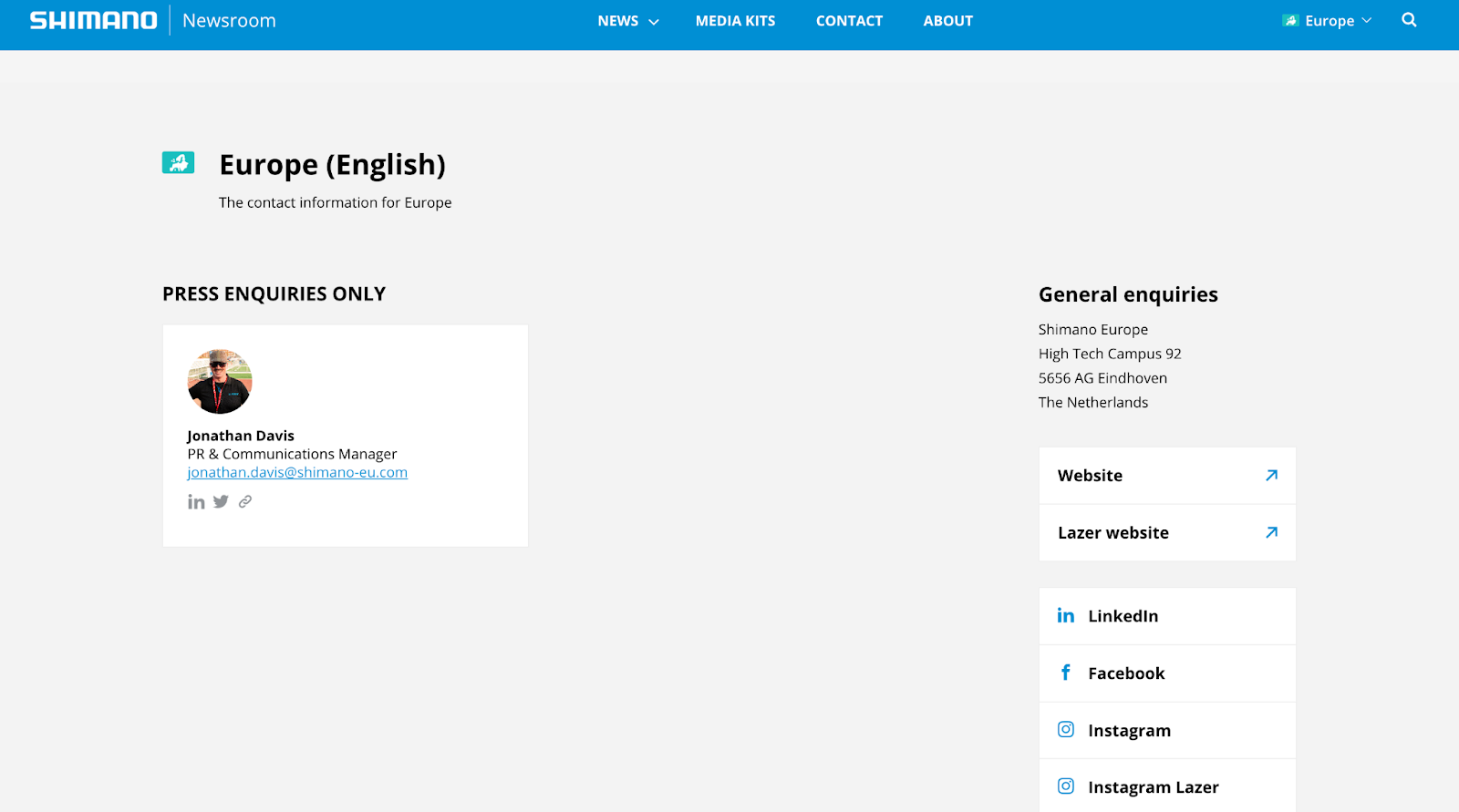
Source
Also, include your company’s social media links, logos, or corporate bio. These are things journalists can use if they need some additional and background information for their article.
Don’t know what stories to include in your newsroom? It’s a good idea to get professional PR services. PR providers have vast experiences in what kinds of stories can capture the attention of the right journalists as well as your target audience. This will help you run more efficient campaigns.
Create Other Compelling Content
Press releases aren’t the only content pieces you can include in your website. You can also create thought leadership pieces that position your brand as a trusted information source. These are great for PR since they increase your brand authority.
Hubspot, for instance, has an entire page dedicated to informative marketing blog posts and reports:
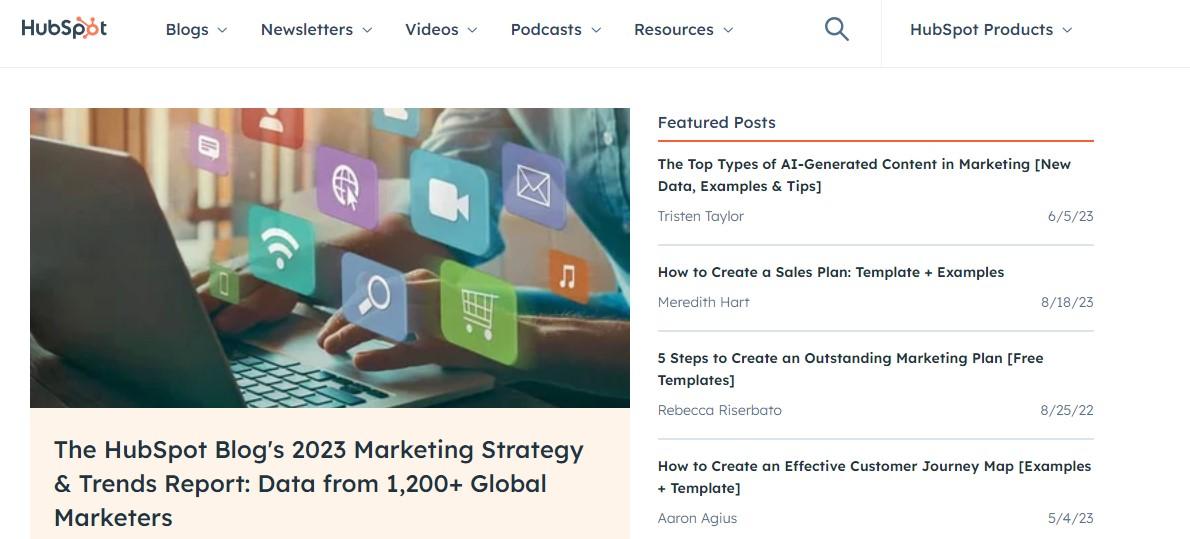
Source
The first step to creating this type of engaging content is researching the keywords your target audience is actively searching for in your niche. As I mentioned earlier, you need this for your content to crop up in search engine results pages in the first place. Tools like SemRush can help with this.
Once you have these keywords, incorporate them naturally into your content.
Make sure your thought leadership pieces are well-researched for people to read them in the first place. Also, proofread your content prior to publication. Thought leadership pieces are powerful tools that can boost your reputation. But if their quality is poor, they will impact your reputation negatively.
Use tools such as Grammarly or Writer to proofread your text prior to publication. You want to make sure your text is free from grammatical issues and spelling mistakes.
Use Geolocation
To effectively use your website as a PR tool, use geolocation. When you know your visitors’ locations, you can deliver PR content specific to them. This makes it easier to attract more local audiences and make your PR messages more relevant and impactful.
For starters, you’ll need to install a geolocation add-on that works with your content management system (CMS). Geolocation with MaxMind works just fine with Concrete CMS for example.
Then, segment your target audience into these locations to create public relations campaigns and content that speak to each group. For instance, if you have site visitors from Korea, pictures of your PR business events involving K-pop stars on the homepage will get their attention.
Beyond English, you might consider tailoring your website content and PR stories based on the languages your visitors speak. This opens up the possibility of reaching more foreign audiences. Look at Coca-Cola, for example:
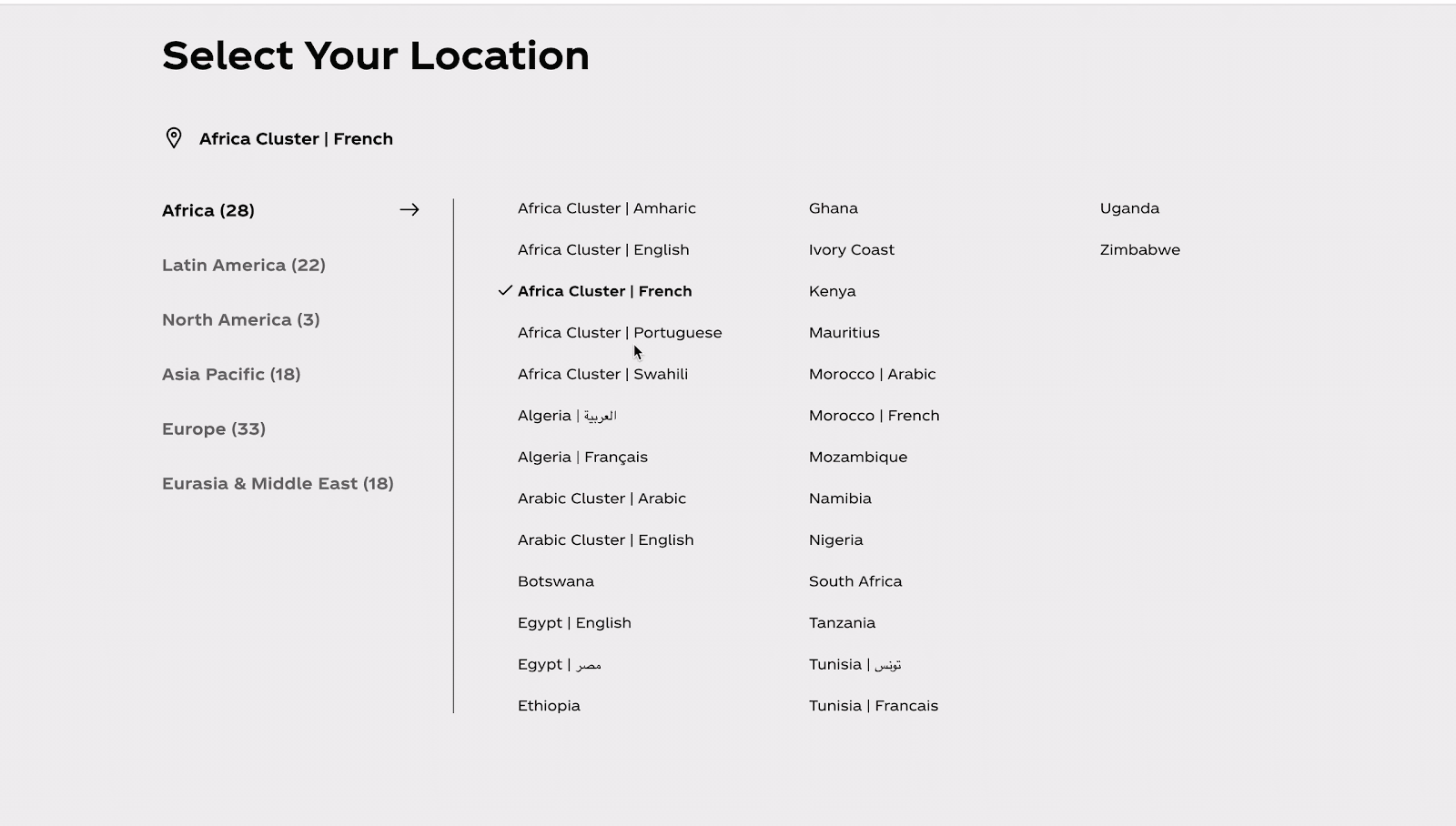
Source
When key audiences from a specific area access your site, you can further showcase testimonials from customers or endorsements from industry influencers within the region. This highlights your existing relationships with people nearby, boosting your credibility and showing that you're already making a positive impact in their community.
Leverage Social Media Integration
Integrating social media platforms with your website can help amplify your social media and website PR efforts.
You can include icons that lead to your social media pages in your press releases, blog, and other shareable pages, as in the example below.
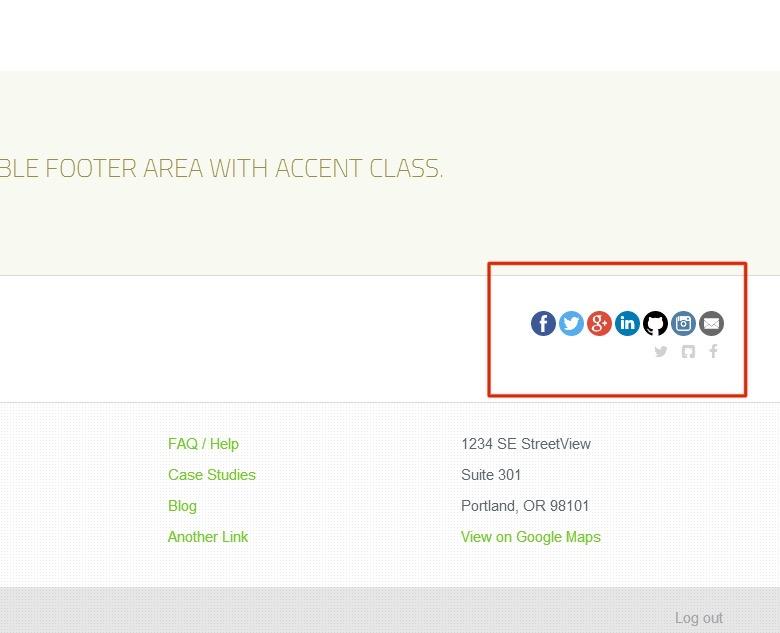
Source
These make it convenient for people to share your content with their own social media followers. You can increase your social media engagement, too. After all, you can easily get more likes on Instagram, more Facebook followers, and retweets.
You can add icons to your Concrete CMS website using the social links feature in the dashboard.
Using an add-on like Social Share Light, you can also integrate your social media posts or feeds directly onto your website to give your social media public relations efforts more exposure. Kikkoman, for instance, displays its latest Instagram posts on its website.
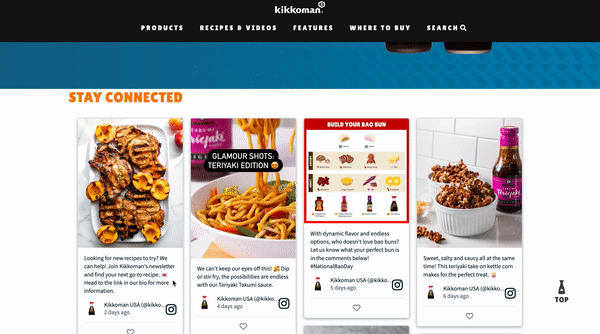
Source
If you display social media testimonials on your website, too, you can further build confidence in your company.
Optimize Website for SEO in Other Ways
We’ve talked about how you should optimize your content for SEO to get it to appear in search engine results pages given a query. But that’s not all you need to do to get people to see your site’s PR messages.
To ensure Google crawls and indexes your pages, use simple URLs, typically within 50-60 characters. Also, include your main keywords in the URL.
Ensure a fast page speed, too. The faster your page loads, the higher the chances you’ll rank given a search query. Use Google PageSpeed Insights to see what needs improvement.
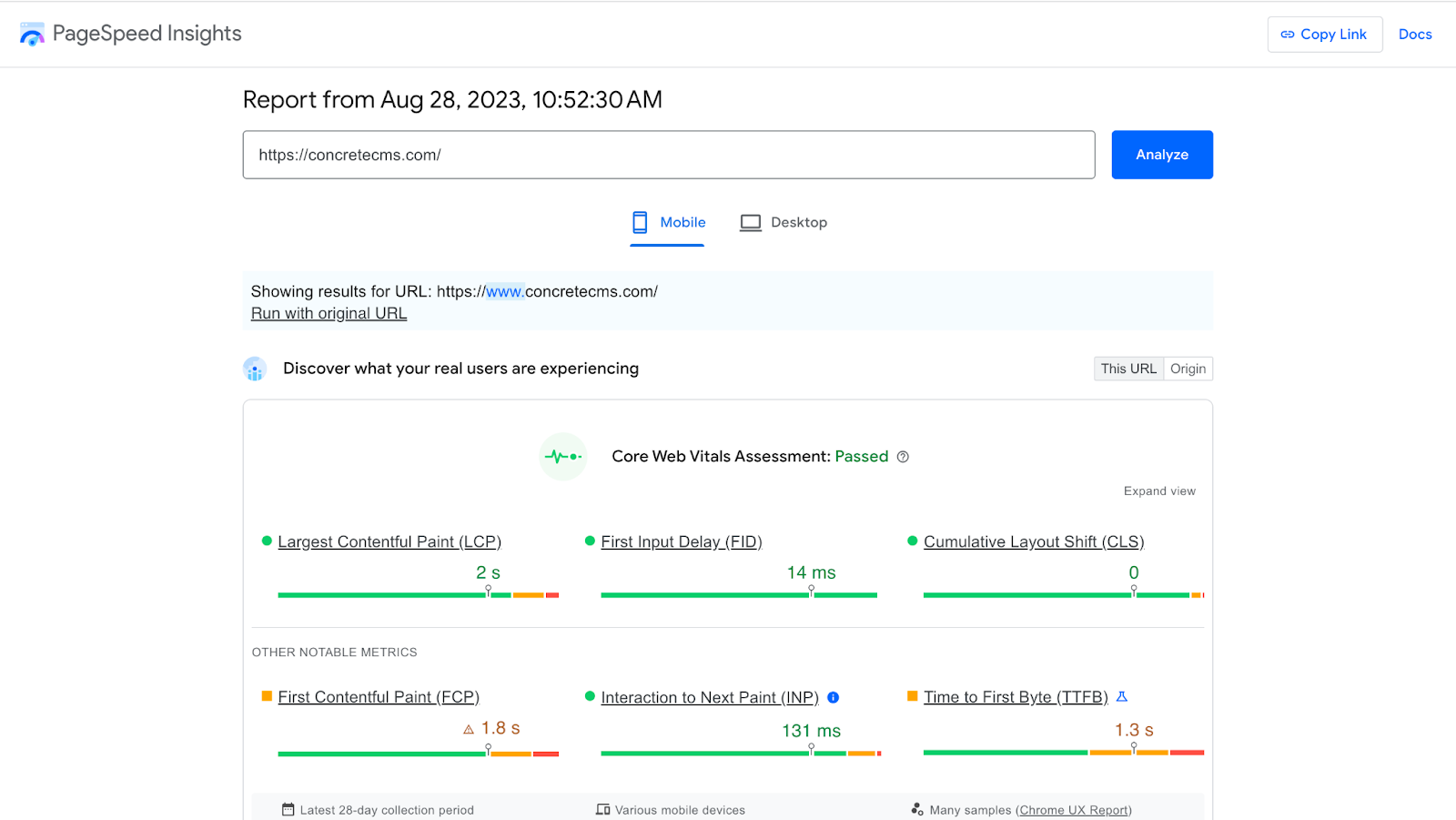
Source
Finally, have an effective link-building strategy. When high-authority websites link to you, they share this authority with you. This signals to Google that your content is relevant, resulting in higher rankings.
You can get backlinks (and boost your authority further in the process) via guest posts. Pitch relevant content showcasing your industry expertise to sites with a domain authority of at least 60. If you get published, you’ll get to add a backlink for your site.
In Closing
Your website can be a valuable addition to your already solid digital PR arsenal. But there are tips you should follow when using your website as an online PR tool.
Ensure a user-friendly design. Also, build a dedicated newsroom for press releases and other content. SEO is another effective tool to help you get your PR site messages to a wider audience. Use geolocation and social media integrations to further expand your impact.
Leverage your website as a PR tool the right way and you’ll stand out in a crowded market. Good luck!
By Chris Norton, Founder of award-winning B2B specialist PR agency Prohibition, host of Socially Unaceptable the top 100 marketing podcast and author of the social media training blog. For tons of digital PR tips, you can follow Chris here: @chris_norton.
